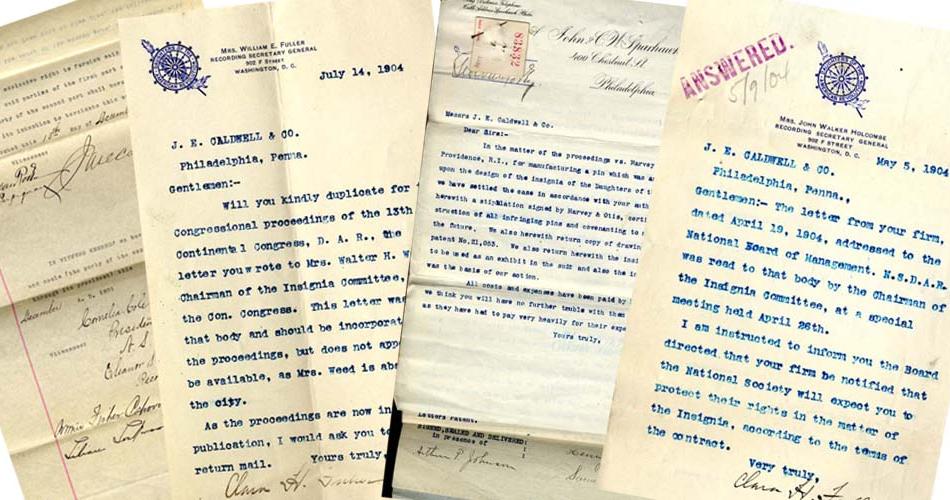The Society of American Archivists promotes October as American Archives Month each year. This event gives archivists an opportunity to promote both the collections they work with and their profession. For the past few Octobers we have blogged about the NSDAR Archives, giving readers a glimpse at the treasures it contains and how we care for them.
For this Archives Month blog we are featuring a donation the NSDAR Archives received of J. E. Caldwell records in early 2018. From 1892 until 2010 J. E. Caldwell was the official jeweler for the DAR, producing insignia pins, officer pins, and numerous other pins for DAR members. The donated records date from the mid-1890s to the early 1910s, which gives us an early glimpse of the company’s association with the DAR. While we do have an existing collection of J. E. Caldwell records, our collection documents only a small aspect of the 118 year association between the two organizations.
This blog has a twist. Normally at this point, we would go into show and tell mode and highlight the significance of the items that were donated. Have you ever wanted to know what happens to records and items after they are donated to the NSDAR Archives? If so, read on.
It was an easy decision to add this donation to the existing J. E. Caldwell Collection. When I compared the donated records to the existing collection, there was a fair amount of overlap of subject matter and type of records. For example, both collections contained contracts covering similar time frames and items, such as the production of the official DAR insignia, ancestor bars, and souvenir spoons.

 Today's DAR
Today's DAR



